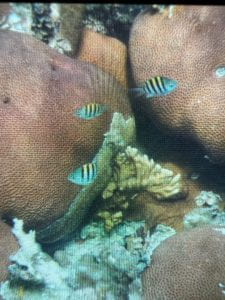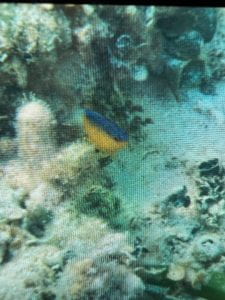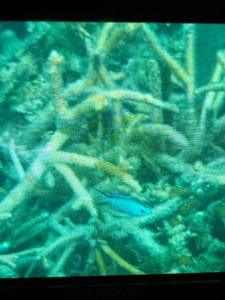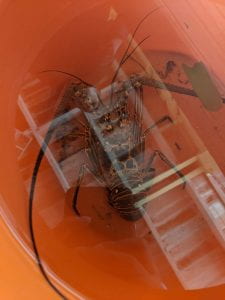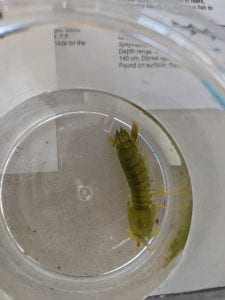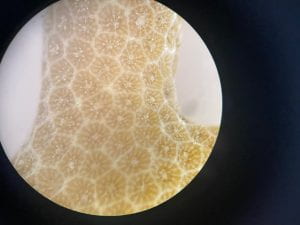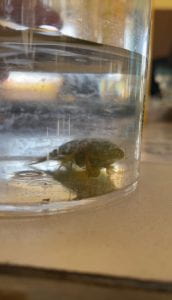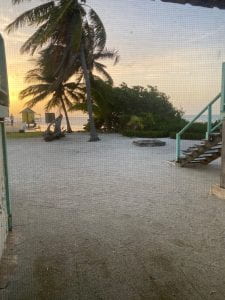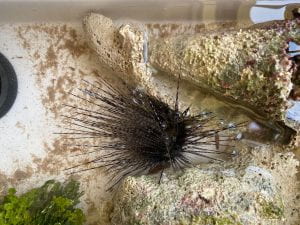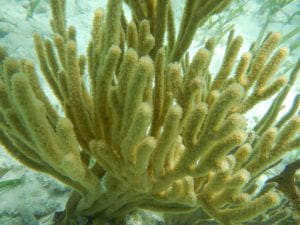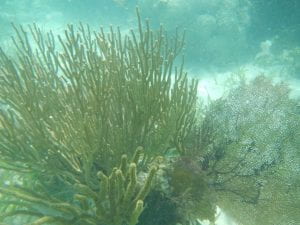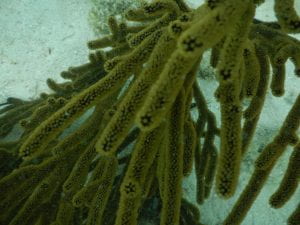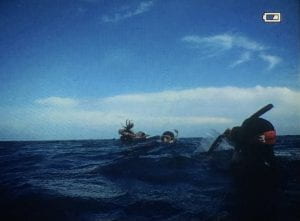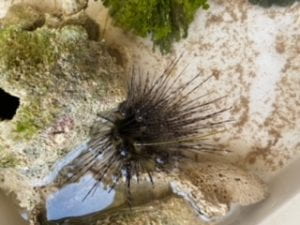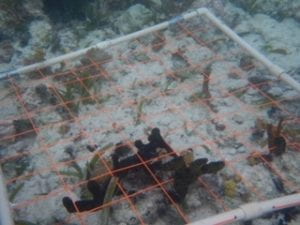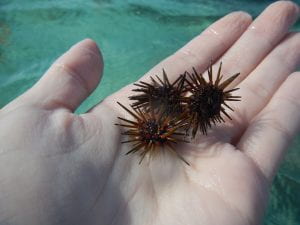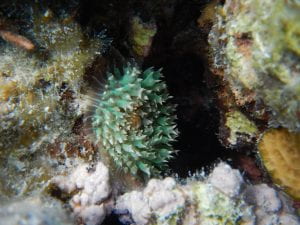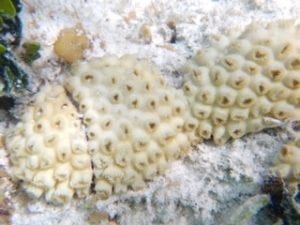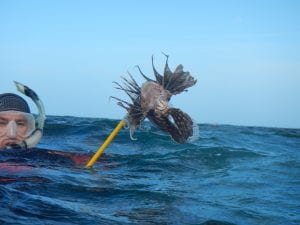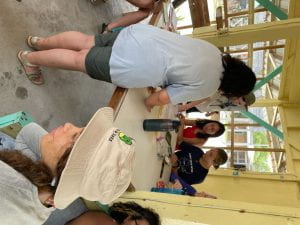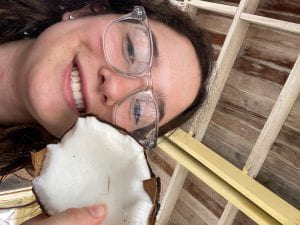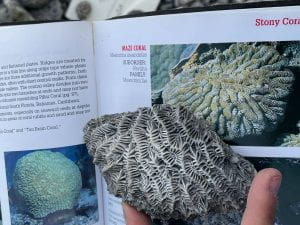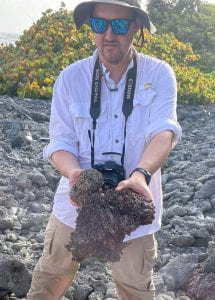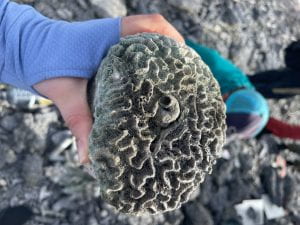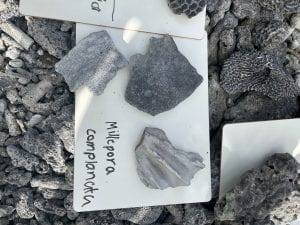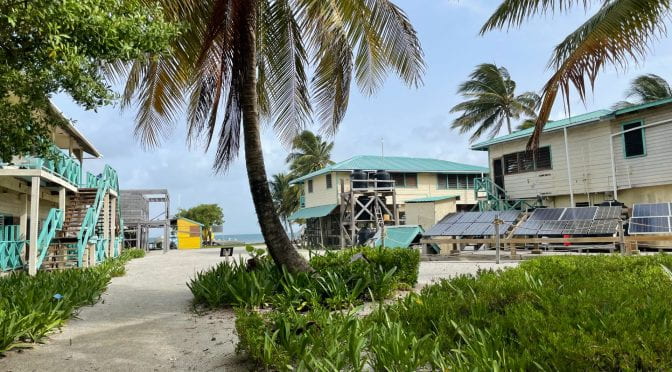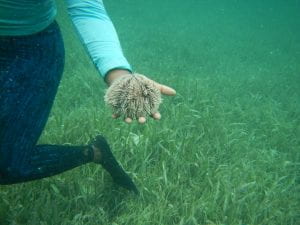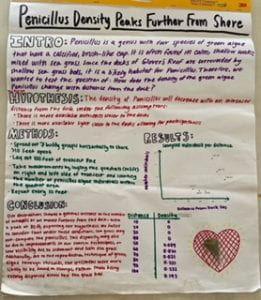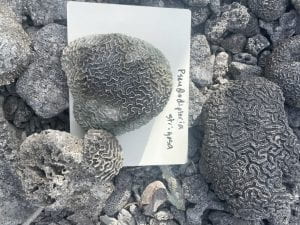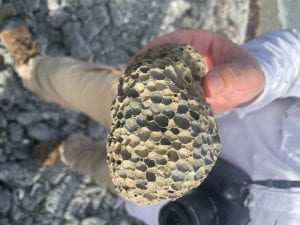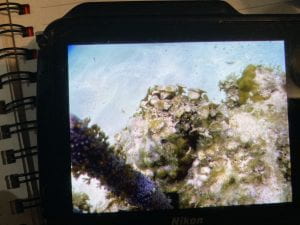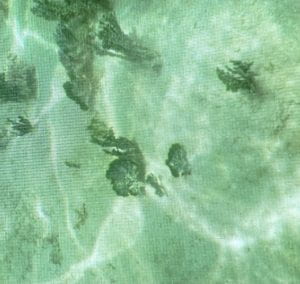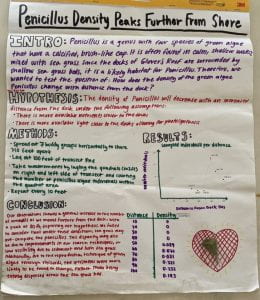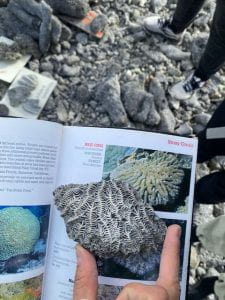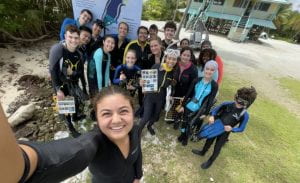Hey guys! It’s Michiel again; I’m sure you all missed me : )
This morning started the same as every other morning here. I woke up, got ready, and joined the others for breakfast in the dining hall by 7. After breakfast, everyone in the class put on their snorkeling gear and went out into a new area of the water that’s behind the dining hall. It was full of sea grass and very shallow, but our goal was to find as many interesting species as we could and put them in a bucket. Some notable finds were a lobster, Diadema antillarum (a sea urchin with an interesting history), a sea anemone, and several crabs. In regards to herbivorous fish, though, we caught a Cocoa Damselfish (Stegastes variabilis), and a Bicolor Damselfish (Stegastes partitus). These fish are actually very territorial, so we saw them chasing and trying to bite one another in the bag. Once we laid out all of the species we caught in the wet lab, every person presented on the species caught within their taxa. We passed around lots of algae and talked a lot about different corals; it was so much fun!
After this, we took a break for lunch before going out on a boat in our snorkeling gear to work on a new research question we had come up with earlier in the day. We are trying to identify the correlation between sea urchin prevalence in a reef and the percentage of dead coral in the reef, and we want to see how this changes between Marine Protected Areas and other areas. We went to a reef that wasn’t in an MPA and tried to measure the percentage of dead coral in the area we were looking at using transects and quadrats. However, the waves were really strong and the reef was shallow, so Ava and I kept getting pushed into coral. After collecting this set of data, everyone collected sea urchins for 10 minutes, and we actually found 18 of them!
With our urchins and data collected, we left this reef and went to a new reef that was in an MPA. However, since the wave conditions were so harsh, we just snorkeled instead of collecting data. This reef was really nice. It had a bunch of fish diversity. I had a lot of people coming up to me asking about fish they saw (they mostly saw Yellowtail Damselfish and Blue Tangs). Unfortunately, I saw neither of these, but I did see a Blue Chromis (Chromis cyanea), which is beautiful, and some Threespot Damselfish (Stegastes planifrons). These kept staying very close to the coral, hiding in the crevices as I approached. They tend to do this because they’re pretty small, so they’re great prey for larger fish and are therefore more likely to hide when approached by something larger than them. We also saw a huge lionfish that Scott speared and took with us back to the island! Hopefully we will be feasting on lionfish ceviche tomorrow.
That was most of my day! We had some presentations in the evening that were very interesting (as always), but now it’s time to rest in preparation for tomorrow. Have a great night, guys! (Also here are my very feeble attempts at taking pictures of some of these fish).
